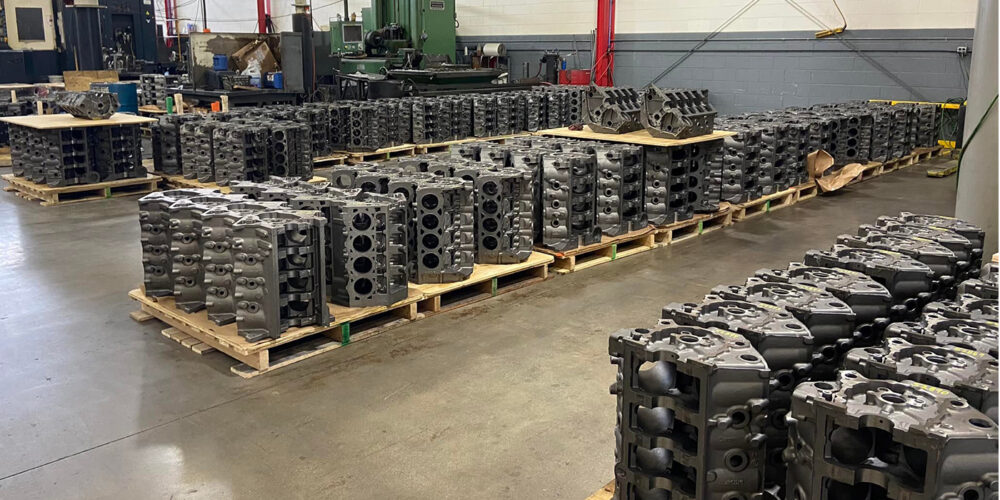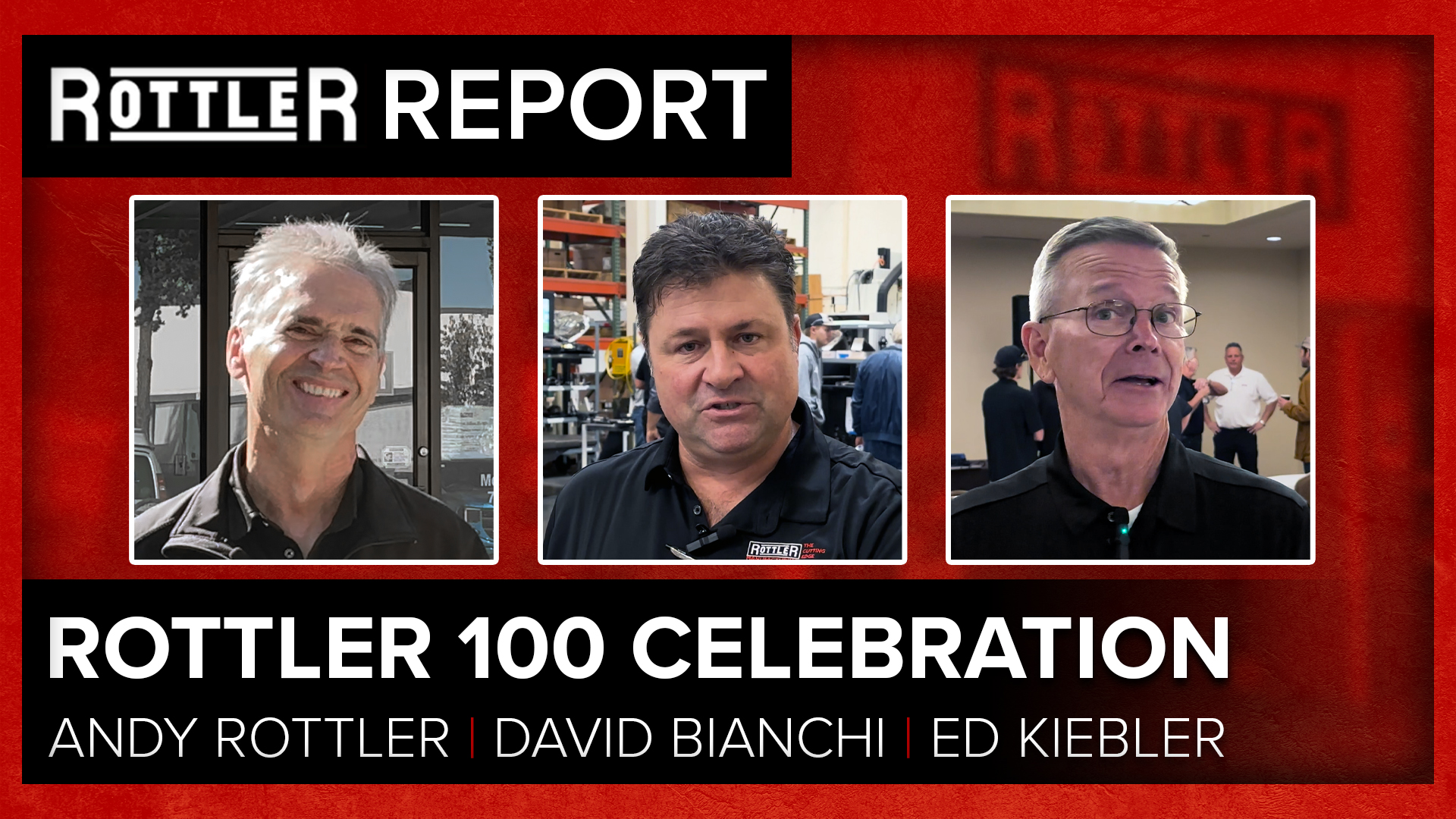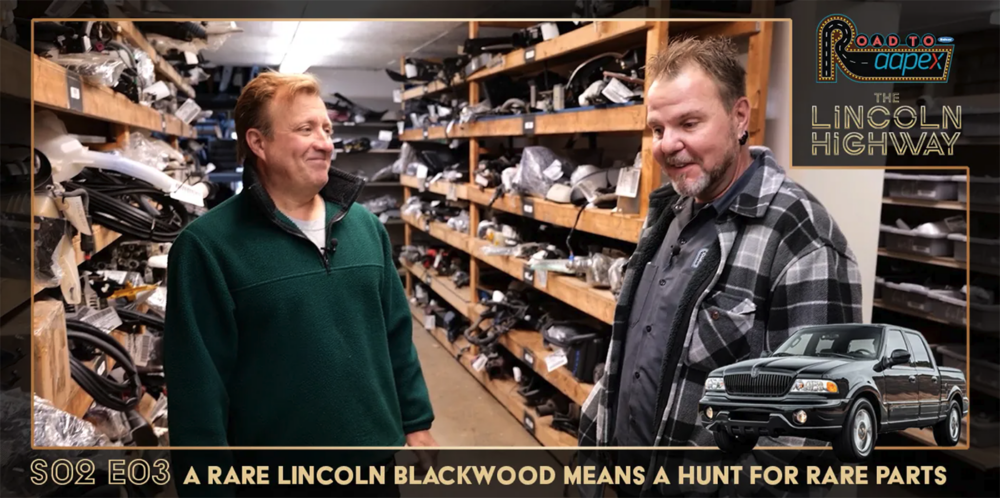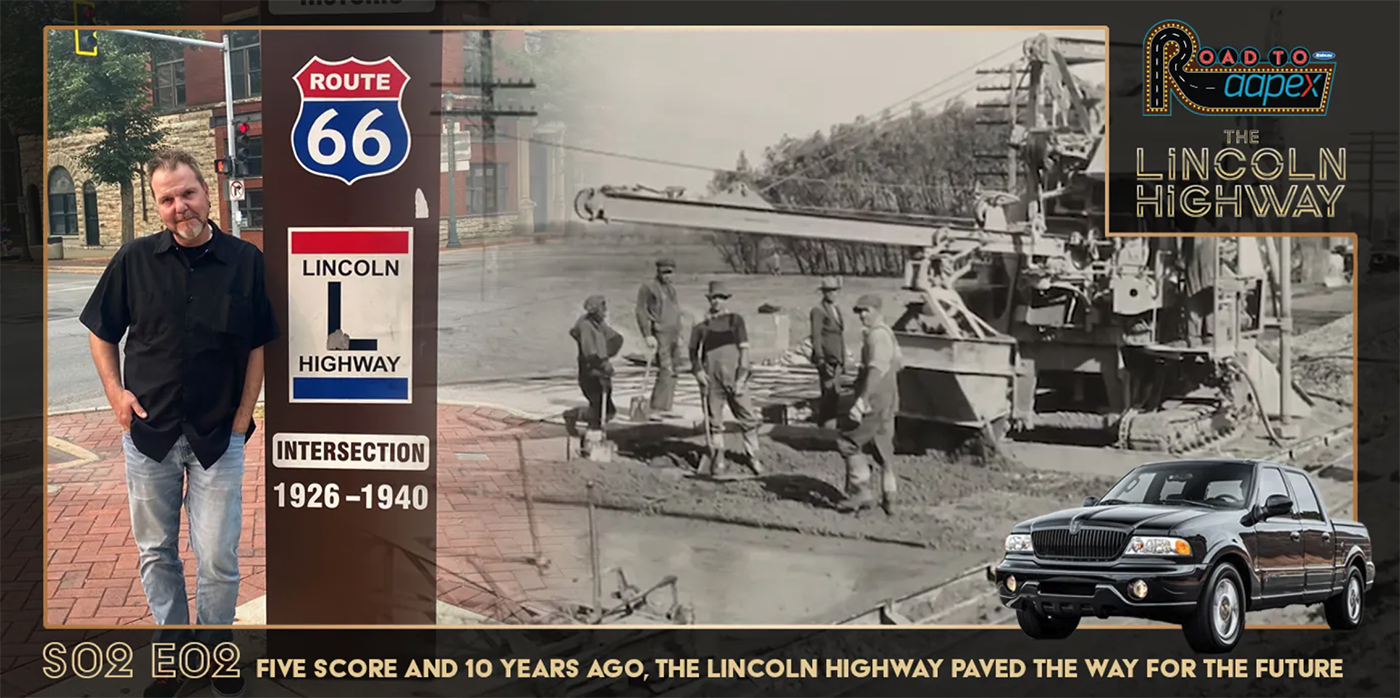“My main job the past year, year and a half has been as a parts sourcer, not necessarily an engine builder and machinist,” says Graham Jones of FastTimes Motorworks. “When you add another job, that makes it very difficult because two hands can only produce so much, regardless of what they’re doing.”
That quote resonated with me when I spoke to Graham a few weeks back, and it likely resonates with just about every engine builder out there who has experienced the struggles of component shortages and longer lead times on parts. I know I felt it firsthand in 2022 when we put together a small block Ford build for the PRI show, and that was just a small taste of what you engine builders have been going through since 2020, and it continues today.
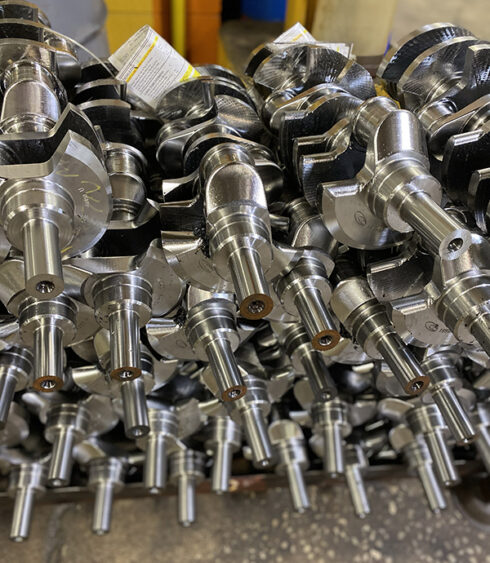
Obviously, the pandemic created a mountain of issues that the world is still getting out from underneath, but as it relates to this industry, the supply chain has been a mess, people’s health is a mess, employment overall is a mess, and the result has been extremely long lead times for many engine parts critical to the cashflow of engine shops around the country.
I caught up with a few engine builders to get their take on the current situation compared to a year or two ago, as well as a few manufacturers to see how each side has been handling these long lead times, and if a return to normal is in sight, or a new normal has already begun.
At the Engine Shop Level
In general, across the country, engine builders have seen an improvement in lead times on engine components coming from manufacturers. Those lead times are no longer months upon months as they were in the middle of 2020 and throughout 2021, but the situation is still of some concern, and it’s forced engine builders to get creative at times.
“Prior to the pandemic, waiting on parts might have taken two weeks, and a month was a long time,” says Chris Wright of Pro Car Associates in Akron, OH. “Recently, I haven’t been seeing the four to six month lead times like during Covid. It seems to be like two months is the norm now. However, it’s been hit and miss. If you catch a manufacturer when they just get reloaded up on stock, and you catch it at the right time for rods, for pistons, for cranks, you might only have a week to two-week lead time. If you catch it in between, like they just ran out, it might be 30-60 days.”
Graham Jones at FastTimes Motorworks in Rolling Meadows, IL agrees that this industry’s lead times aren’t out of the woods yet. However, everyone seems to understand the situation, and it’s a situation the industry is going through as a whole.
“The whole market is still upside down because nobody can build inventory because they’re still fulfilling back orders from two years ago,” Jones says. “It’s a brutal situation.”
That frustration is mutual, and those stocking issues have been a main source of tension since there is still little consistency from manufacturers.
“It’s frustrating because there’s a lack of availability and they always claim it’s resources, it’s people, it’s because companies don’t want to stock as much, and the cost of doing business is also more now today too,” Wright says. “Look at what they’ve got to pay employees now. The situation is goofy at times, and I can’t say it’s been consistent.
“Sometimes I get stuff the next day. For instance, I ordered Hemi aluminum rods the other day from MPG. They had three sets on the shelf and I had them the next day. Now there’s only two sets left and those could go quick, and once those are gone, it might be six to eight weeks before they have them ready again. The eight- to 10-week lead time seems to be the norm for some of these components now.”
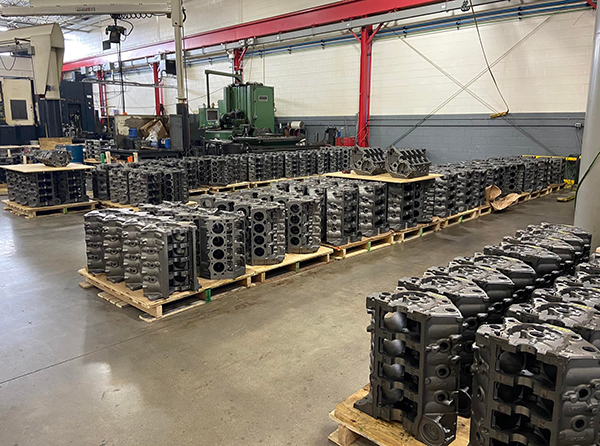
In speaking to both Chris and Graham about lead times they’ve been seeing, they tended to agree about most components. Larger, more production-intensive items such as blocks and cylinder heads were among the longest wait times, while pistons, rods, cranks, and some valvetrain parts were in the middle, and the smaller, cheaper items were the shortest wait times. The only exception was with ARP hardware. Both builders voiced frustration that those parts were nowhere to be found.
When parts aren’t sitting on the shelf to be scooped up, here’s what lead times builders have been experiencing currently for the following parts (rough estimates):
- Blocks = 30 weeks
- Cylinder Heads = 6-16 weeks
- Cranks = 8-12 weeks
- Pistons = 8-10 weeks
- Rods = 4-8 weeks
- Hardware = 6 weeks
- Lifters, Cams, Springs, Pushrods = 1-2 weeks
Of course, some parts are more labor intensive, while others rely on numerous additional kit items to be included, all of which contribute to a longer lead time. However, what these long lead times have done is forced the hands of many engine builders to go elsewhere for engine components.
It’s no secret many builders are loyal to certain brands for certain components, but there’s only so long you can wait until you need to proceed with business, and manufacturers fully understood that.
“Everybody is having to make concessions, whether it’s on something that they want or something that I want to use,” Jones says. “You either get the job done and move on, or you sit and wait. It’s just been brutal. You have to be very savvy at sourcing parts because you want to get the job done. You have to buy it regardless of where you can get it from in order to be able to get the job done.”
Chris has also had to make those same concessions on parts he thought he’d never deviate from such as Diamond pistons and T&D rockers.
“These last couple years have forced your hand to start looking for other avenues,” Wright says. “I’m kind of anal about certain products, so I’ll wait for Diamond pistons, for example. Sometimes it depends on the type of build too. If it’s a streetcar build, I might be okay with the other brands of parts. If it’s a true performance build and the guy is going to beat on this thing, I want my good pistons, rods and crank, as well as a solid block. From there, I can go a couple ways with springs, pushrods or lifters, for example. I’ll try stuff like that for guys on a budget, but generally, I stick pretty strongly with certain brands for certain things and certain applications.”
Some of those decisions also involve the customer, which adds another element to it. They have the choice of waiting for a part the builder will stand behind, or opting to go with an alternative, which the builder may not stand behind.
“I’ve had instances where there was a real bad shortage of rods and I had to upgrade two jobs from a standard H-beam to one of the ‘boost ready’ H-beams, and I did it at no charge just to get the job done,” Jones recalls. “I lost some money on it, but this business is hard enough as it is. It’s not worth hanging on waiting for weeks on end to get a standard H-beam when you can finish the job and then get the cash flow. That’s the thing we have to deal with is cash flow.
If you can lose a few dollars to have money coming in to keep things going, is it the best way? No. But considering the situation that we’re all in, sometimes it’s worth it.
“A lot of it depends on how aggressive you want to be at sourcing. If you’re dead set on brand X, you might be waiting 12-14 weeks. If you’re okay with using a different brand or a slightly different product to get the job done, then your lead time could be as short as three or four days.”
All-in-all, from the standpoint of the engine builder, lead times are improving, with very few exceptions, the average lead time on most parts has been around eight weeks.
“I think we’re more accepting of that longer lead time these days,” Wright says.
Manufacturer Level
While frustrations have been running high at the shop level, it’s likely been tenfold at the manufacturer level since the issues haven’t solely been about parts. Issues for manufacturers are the supply of raw material, employees being sick, employment being tough, and the cost of business increasing, while still trying to fulfill the backlog and get caught up.
We spoke to a few manufacturers about their situations and what the remedy has been to keep pumping product out the door.
ARP
As mentioned, ARP products have experienced some of the longest lead times and shortages in the market. Chris Raschke of ARP gave us an update on the company.
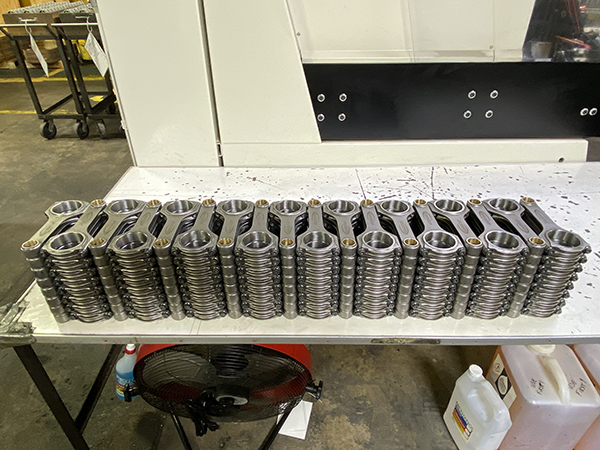
“ARP has always kept a year to two-year supplier of material on the floor,” Raschke says. “We have a very narrow window of who we purchase our materials from, and there’s a very short list of suppliers. During Covid, some of the suppliers were hit very hard because they were in areas where the state had a complete shutdown. We went from some material suppliers that were always at a six-month lead time to where now they’ve jumped to a 62-week lead time.
“We also got as high as 44 people being out at a given time during Covid, so that’s a good chunk of the 288 people we had at our peak. We’ve had as many as 20 out for the last two or three years. We also had four people actually pass away. We’ve been hit pretty hard from it as a company. Today, we’re only at 266, but we are always openly looking to hire new people to expand.
“We’ve also had newer equipment require maintenance and new parts, which we found out takes six to eight months to get. In the meantime, we were fortunate our business was very, very strong. We’ve been putting a lot back into infrastructure and in growing the business.”
Chris told us that ARP is looking into more equipment, more land, and new buildings to help keep up with demand and growth. Of course, ARP has also been streamlining the production process.
“We have over 5,000 different catalog kit numbers, so keeping all those different components on the shelf is really quite a job,” he admts. “We’ve added additional capacity and we’ve been streamlining some of the production methods. We’ve been taking a good hard look at every part of the process to see if there’s something that we can improve on. For instance, when we make a run on a component, we might make a longer run so we don’t have to go back onto that job in three months. That also saves us on setup times and frees up that machine for other runs.
“We’re also looking at doing a better job as far as how we’re scheduling employees through the shop. As a result, our lead times have been coming down and they will continue to come down. As we manufacture more product more efficiently and we put stuff on the shelf, that’s what frees up the machines.
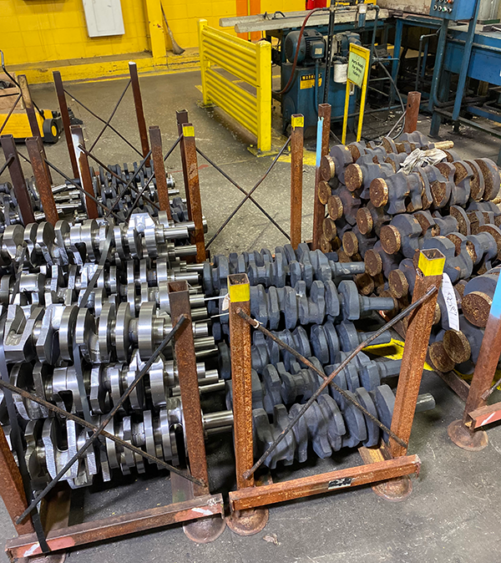
“There’s a lot of reasons that come into play for why things happen, but our goal is to always be better. Our goal is not always to do the thing the fastest, cheapest way. We always try to make the part the best possible that we can for a cost-effective price in a reasonable amount of time. We’re not going to sacrifice quality for time, and we’re fortunate that we have a very good diverse crew and diverse shop to where we have the best of both worlds.”
Callies
In 2021 and at the beginning of 2022, cranks were one of the longer waits engine builders had to have patience for. And, as we heard, rods have been up and down as well, so we caught up with Brook Piper to get an update on Callies Performance Products.
“Depending on the product line, lead times have grown,” Piper says. “It has been a struggle with the overall demand along with workforce shortages. However, it has gotten better on things we import, but domestic-made items have been a real struggle yet.”
According to Brook, Callies has great employees, but maintaining the overall workforce has been a proponent of longer lead times.
“I think everyone struggles with this now regardless of the industry you are in,” he says. “If only the government would quit subsidizing people to stay at home it would be a major win for everyone.”
To rememdy some of the issues Callies has faced, Piper says automation and rethinking how the company manufactures items are at the top of the list.
“We are combining work cells so several operations can be completed by fewer people,” he says. “Along with adding some automation.”
Brook says those efforts should help get Callies back to pre-pandemic lead times, but unfortunately, it’s an ongoing effort.
“I am hopeful with additions made and being made by mid- to late-summer we will be back to those days,” Piper says.
Dart Machinery
“I think Dart has probably been impacted the most with the Covid drama,” says Steve Rhodey, sales manager for Dart, Trend and Diamond when comparing the brand to others in the Race Winning Brands portfolio. “We started out being able to do an SHP Ford or an SHP Chevy within 10 to 12 days. That lead time quickly turned into 35-plus weeks for a long time.”
According to Rhodey, Dart faced multiple issues, everything from foundry issues and shut downs to supply chain issues.
“We went from doing anywhere from 600 to 750 blocks a month to probably under 50,” Rhodey recalls. “Certain quality issues were arising, and then of course, we had internal labor force issues and trying to bring new people in and have them trained and we saw high turnover. We dealt with everything. It was real tough.
“The great news is that we’ve been able to build on the existing partnerships that we’ve had for the last 25-plus years with the foundry. We’ve been able to maintain our stateside suppliers. We’ve been able to help invest some time, some ideology and some cash flow into them. We’ve been able to update some tooling as well – just essentially working very closely with the foundries to get back on a good term.”
During these hard times, Dart was contemplating some difficult decisions regarding finding a new source and new supplier, as well as potentially going overseas.
“The short and long answer was no, we should not,” Rhodey says. “We understand that Dart is a hardcore, made in America, very United States-oriented demographic, and all of the 300 employees within those four walls would feel the same way. We just did whatever we had to do to keep everything stateside and reinvest some of the money back into the foundry for some assistance and do whatever we had to do to keep those guys live and not move around any products.
“Fast forward to the last 60-90 days, our foundry support has increased tenfold. We’ve got a ton of raw material on hand with blocks and heads. Suppliers are getting what they need regarding all the kit components, and the lead times have dropped significantly. With regard to backlog, we’re still looking at about a 22-24 week lead time for delivery on new orders. We have kind of pushed that out mainly just to be able to fulfill some of the backlog and get some of the customers that have been waiting for so long back in good standing. We’re getting back on track and making a good plan for the second half of the year. Currently, our average block throughput over the last 90 days has been over 46 pieces a day. That gives you an idea of what type of volume we’re looking at with three shifts. The majority of that is the SHP line.”
Diamond Pistons
When speaking to Steve Rhodey about Diamond Pistons, he immediately pointed to shop director Ken Haglund as being a secret weapon.
“He’s extremely goal-oriented, very detailed, very organized and he has been a key element in the success for Diamond,” Rhodey says. “Even through the really tough times of Covid, he was still doing pretty damn good with lead times. I’m positive that we have been the best piston company throughout ‘21 and ‘22 regarding lead time.
“Our full custom pistons are at 10-12 weeks max. All of our stock, exclusive stock and non-stocking jobs are at four weeks right now, so inventory is looking good. We’ve got some popular movers sitting on the shelf to satisfy the customer needs as quickly as possible. However, Diamond is much more known for their custom pistons and their ability to do what we call ‘as per with changes.’ Those pistons are being done in four or five weeks.”
Rhodey also credited the forging supply for Diamond, which comes from Wiseco’s and JE’s main manufacturing center in Mentor, OH.
“Mentor has done a great job of keeping us fed, and it’s been good,” he says. “I think the main issue that we have with Diamond is not the lead time on building the pistons, it’s the lead time on gathering the components that we kit with pistons. When it comes down to it, we’re having a tough time getting a ring set or wrist pins or the ancillary coatings and whatnot.
“The average lead time is eight weeks right now, where the average lead time back in January of ‘22, was double that.”
Trend Performance
Rhodey also spoke to us about Trend Performance, which he admitted was damaged goods last year due to production-type issues with their .080” wall pushrod line and material issues with their heavy-wall pushrod line.
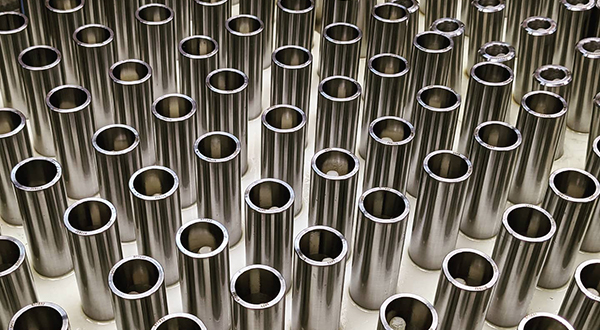
“Lead times on stocking orders had climbed up to anywhere from 28 to 30 weeks [on the .080” wall pushrods],” Rhodey told us. “On our heavy-wall pushrod line, the lead times went up to 40-plus weeks. It was a difficult, really, really tough time. We lost some really good customers, understandably so. They still had a job to get done, so we don’t hold that against them. But, I’m happy to report that as of right now, we’re back up to an eight-week lead time for stocking .080” wall pushrods.
“We’re able to fill our monthly blanket orders to our big customers, and we do a lot of private label, so those guys are pretty happy right now. We’re still playing quite a bit of catch up on the heavy-wall side. That lead time is still around 12-14 weeks.”
According to Steve, Trend found itself in a hole due to more than a year of ‘panic purchasing.’ Making matters worse, when the governor of Michigan shut the state down for a few months, Trend just ran out of stock.
“Trying to rebuild that inventory and trying to add a safety stock level has been difficult,” he says. “Those struggles aside, we have one hell of a production team over at Trend. There’s nothing but care and focus and it is a good mix of people over here, so we’re getting back on track with pushrods.”
Wrist pins have been a whole other ordeal Rhodey told us. Trend is just one pin company supplying four piston companies under the same umbrella, plus several others.
“It’s been interesting trying to supply almost a dozen piston companies with wrist pins out of this little, teeny, tiny, South Warren, MI facility,” he says. “In the middle of all this, we really tried to add a second shift to Trend to try and play some catch up. That’s not easy. As a business that historically has only been run on one shift, we just couldn’t produce enough of whatever we had in stock. Trying to implement that second shift was a big challenge, but we were able to get through it and we’ve got two full shifts running at Trend.”
Rhodey also pointed out that the executive team at Race Winning Brands was quick to support the product portfolio and ensure things get back on track.
“There’s been a lot of focus put into these brands,” he says. “It’s been one hell of a wild ride. We’ve got a lot of good employees and we’ve been really blessed with all their support. The real success is owed to them and our customers for sticking by us.” EB

